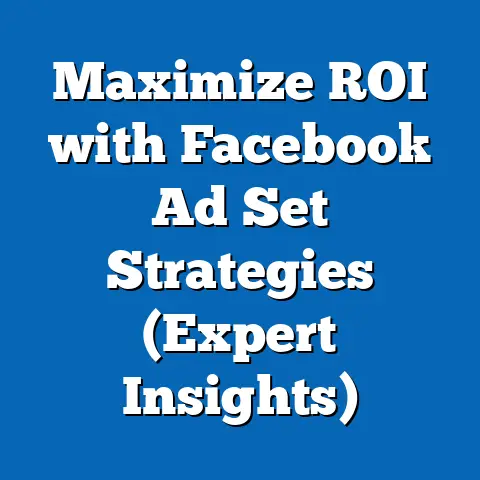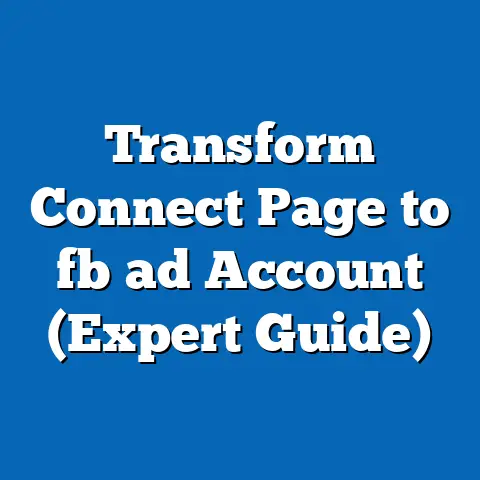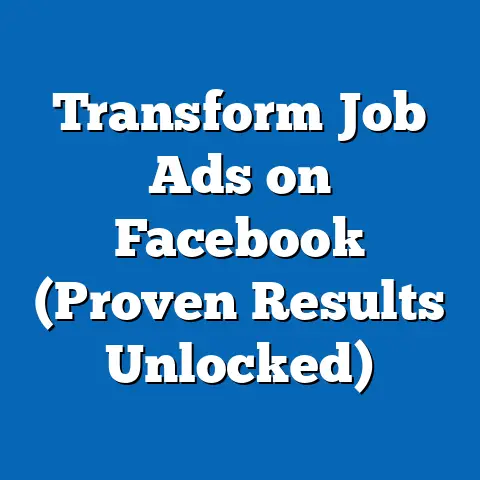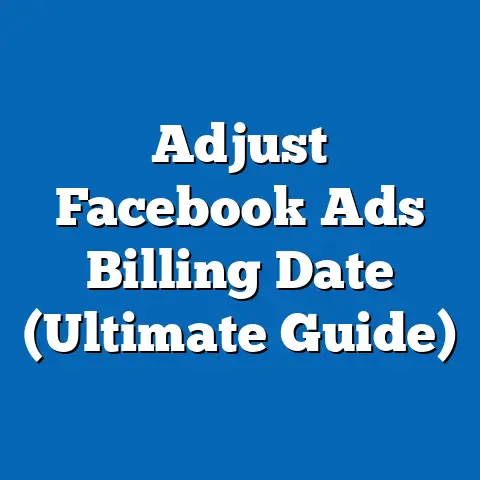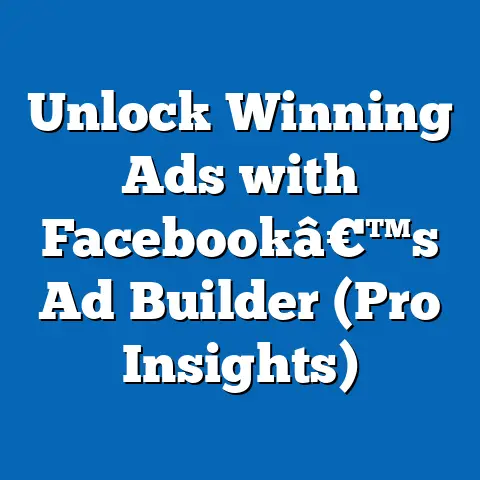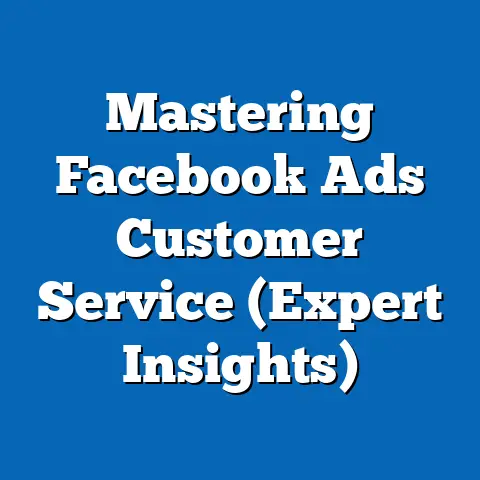Maximize Freelance Facebook Ads Success (Expert Strategies)
Imagine the digital world as a sprawling marketplace, where every freelancer is a vendor shouting to be heard amidst a cacophony of voices. In this bustling bazaar, Facebook Ads emerge as a megaphone—a tool that can amplify your message, target the right audience, and transform clicks into clients. For freelancers, mastering Facebook Ads is akin to mastering the art of standing out in a crowded square, where visibility is currency and strategy is survival.
Section 1: The Rise of Freelancing and the Digital Advertising Revolution
The freelance economy has exploded in recent years, driven by technological advancements and a societal shift toward flexible work arrangements. According to Upwork’s 2022 Freelance Forward report, 39% of the U.S. workforce—approximately 60 million people—engaged in freelance work, contributing $1.3 trillion to the economy. This surge reflects a cultural pivot away from traditional 9-to-5 roles, fueled by the desire for autonomy and the accessibility of digital tools.
Parallel to this rise is the evolution of digital advertising, with Facebook (now Meta) at the forefront. Launched in 2004 as a social networking site, Facebook introduced its advertising platform in 2007, initially as a rudimentary tool for businesses to connect with users. Over time, it transformed into a sophisticated ecosystem, leveraging user data to enable hyper-targeted campaigns—a game-changer for freelancers with limited budgets but big ambitions.
Historically, advertising was a mass-market endeavor, dominated by print, radio, and television, where small players like freelancers had little chance to compete. The advent of social media advertising democratized access, allowing individuals to reach niche audiences at a fraction of the cost. Societally, this shift has empowered solopreneurs to build personal brands, but it has also raised concerns about data privacy, algorithmic bias, and the ethical implications of micro-targeting.
Section 2: Defining Characteristics of Successful Freelance Facebook Ads
What sets a winning Facebook Ad campaign apart for freelancers? At its core, success hinges on precision, creativity, and adaptability. Unlike large corporations with expansive budgets, freelancers must optimize every dollar spent, making strategic decisions that yield measurable results.
First, audience targeting is paramount. Facebook’s robust algorithm allows advertisers to define their audience by demographics, interests, behaviors, and even life events. For instance, a freelance graphic designer might target small business owners aged 25-40 who have expressed interest in branding services—a level of specificity unattainable in traditional media.
Second, compelling creative content is non-negotiable. Freelancers must craft visuals and copy that resonate emotionally and address pain points. A 2021 study by Hootsuite found that ads with clear calls-to-action (CTAs) and authentic imagery outperform generic content by 30% in terms of engagement.
Finally, adaptability defines success in a platform where algorithms and user behaviors shift constantly. Freelancers must analyze performance metrics—click-through rates (CTR), cost-per-click (CPC), and conversion rates—to iterate and improve. This data-driven mindset separates thriving freelancers from those lost in the digital noise.
Section 3: Historical Context: From Classifieds to Clicks
To appreciate the power of Facebook Ads, we must trace the journey of advertising itself. In the early 20th century, freelancers relied on word-of-mouth, local classifieds, or trade directories to find clients. These methods were limited by geography and required significant time investment with no guarantee of return.
The internet’s rise in the 1990s introduced new possibilities, with platforms like Craigslist and early job boards connecting freelancers to opportunities. However, these were still broad, untargeted tools. Google AdWords, launched in 2000, marked a turning point by introducing keyword-based advertising, but it lacked the personal granularity of social media.
Facebook Ads, with their data-driven targeting, arrived as a revelation in 2007. By 2012, the platform had over 1 billion users, offering an unprecedented audience pool. For freelancers, this meant access to clients across the globe, tailored to specific needs—whether a writer targeting e-commerce startups or a virtual assistant reaching busy entrepreneurs. This historical pivot underscores a broader societal trend: the move from generalized outreach to hyper-personalized engagement, reshaping how individuals market their skills.
Section 4: Societal Implications of Freelance Digital Advertising
The proliferation of Facebook Ads among freelancers carries profound societal implications, touching on economic, cultural, and ethical dimensions. Economically, it levels the playing field, enabling individuals to compete with larger entities by focusing on niche markets. A 2020 report by Statista noted that small businesses and freelancers account for nearly 40% of Facebook’s ad revenue, highlighting their growing influence.
Culturally, this trend reinforces the “gig economy” ethos, where self-promotion and personal branding are integral to professional identity. Freelancers are no longer just service providers; they are marketers, content creators, and data analysts rolled into one. This shift fosters a culture of continuous learning and adaptability but can also contribute to burnout and the pressure to “always be on.”
Ethically, the reliance on data-driven ads raises questions about privacy and manipulation. Freelancers, often working with tight budgets, may feel compelled to exploit every targeting option, sometimes skirting the line of intrusive marketing. Societally, this contributes to broader debates about how much personal data should fuel commerce—a tension that policymakers and platforms continue to grapple with.
Section 5: Expert Strategies for Maximizing Facebook Ads Success
Having established the context and characteristics of successful campaigns, let’s explore actionable strategies that freelancers can implement. These insights draw from industry best practices, case studies, and expert opinions to provide a roadmap for success.
5.1: Mastering Audience Segmentation
The foundation of any effective Facebook Ad lies in knowing your audience. Freelancers should start by creating detailed buyer personas—fictional representations of ideal clients based on real data. For example, a freelance social media manager might target “Sarah, a 30-year-old boutique owner struggling with online visibility.”
Facebook’s Audience Insights tool can refine this further by analyzing user behavior and interests. Experts like digital marketer Amy Porterfield emphasize starting small—testing ads on narrow audiences (e.g., 10,000-20,000 people) before scaling up. This minimizes wasted spend while honing in on what resonates.
5.2: Crafting Irresistible Ad Content
Content is king, even in the ad space. Freelancers must prioritize high-quality visuals—whether custom graphics or authentic photos—that stand out in a crowded feed. Video ads, in particular, have surged in effectiveness, with a 2022 Meta report showing they drive 48% more engagement than static images.
Copywriting should be concise yet compelling, focusing on benefits over features. Instead of saying, “I offer web design services,” try “Struggling with a slow website? Let me boost your sales with a sleek, fast design!” Including social proof, like client testimonials, can increase trust and conversions by up to 20%, per Nielsen research.
5.3: Optimizing for Budget Efficiency
Freelancers often operate on shoestring budgets, making cost efficiency critical. Start with a modest daily budget—$5 to $10—and use A/B testing to compare different ad elements (e.g., headlines, images). Digital strategist Neil Patel advises focusing on Cost Per Acquisition (CPA) rather than vanity metrics like impressions, ensuring every dollar translates to a lead or sale.
Retargeting is another powerful, low-cost tactic. By targeting users who’ve already interacted with your content (e.g., visited your website or engaged with a post), you can increase conversion rates by 70%, according to a 2021 AdRoll study. Tools like Facebook Pixel make this seamless, even for non-tech-savvy freelancers.
5.4: Leveraging Analytics for Continuous Improvement
Data is your ally in the ad game. Facebook Ads Manager provides detailed metrics—CTR, CPC, and conversion rates—that reveal what’s working and what isn’t. Freelancers should set clear goals (e.g., 5 new clients per month) and track progress weekly.
Experts recommend the “Rule of 7”: if an ad underperforms after 7 days, tweak it or scrap it. This iterative approach prevents stagnation and aligns with the platform’s dynamic nature. As marketer Mari Smith notes, “Facebook Ads isn’t a set-it-and-forget-it tool; it’s a living experiment.”
5.5: Staying Ahead of Trends and Algorithm Changes
Facebook’s algorithm evolves constantly, influenced by user feedback and regulatory pressures. Freelancers must stay informed—whether through Meta’s official blog or industry podcasts—to adapt to changes like reduced organic reach or new ad formats.
Emerging trends, like interactive ads (e.g., polls, quizzes) or augmented reality experiences, offer fresh ways to engage audiences. A 2023 eMarketer report predicts that interactive formats will account for 25% of social ad spend by 2025, signaling an opportunity for early adopters. Freelancers who experiment with these innovations can gain a competitive edge.
Section 6: Comparing Freelance Ad Strategies Across Generations
Generational differences play a subtle but significant role in how freelancers approach Facebook Ads. Millennials (born 1981-1996), often digital natives, tend to embrace bold, visually driven campaigns, leveraging trends like influencer-style content. A 2022 Pew Research study found that 70% of Millennial freelancers prioritize social media marketing over traditional channels.
Gen X freelancers (born 1965-1980), while tech-savvy, often focus on value-driven messaging, emphasizing reliability and experience in their ads. They may be less experimental, preferring proven tactics over trendy formats. Meanwhile, Gen Z freelancers (born 1997-2012) lean heavily into authenticity and community-building, using ads to spark conversations rather than hard sells.
These differences reflect broader generational attitudes toward technology and communication, though they are not absolute. Freelancers of all ages can succeed by blending generational strengths—Millennial creativity, Gen X pragmatism, and Gen Z transparency—into a cohesive strategy. Diversity within generations also means personal style and client niche often outweigh age-based trends.
Section 7: Challenges and Nuances in Freelance Facebook Ads
Despite their potential, Facebook Ads are not a silver bullet for freelancers. Budget constraints can limit reach, especially as ad costs rise—average CPC increased by 17% from 2021 to 2022, per WordStream data. Competing with larger advertisers for attention requires constant innovation, which can strain time and resources.
Ad fatigue is another hurdle. Users exposed to repetitive ads may disengage, with studies showing a 40% drop in CTR after repeated exposure. Freelancers must refresh content regularly, a challenge for those juggling multiple roles. Additionally, platform policies—such as restrictions on certain industries (e.g., health claims)—can complicate campaigns for niche providers.
Nuance also lies in audience diversity. A one-size-fits-all ad rarely works, as cultural, geographic, and personal factors shape user responses. Freelancers must balance specificity with inclusivity, testing varied messaging to avoid alienating segments of their market.
Section 8: Implications for Freelancers and Society
For freelancers, mastering Facebook Ads translates to more than just client acquisition—it’s about building sustainable careers in a competitive landscape. Effective campaigns can boost income by 30-50%, per a 2023 Freelancers Union survey, while establishing a recognizable personal brand. However, over-reliance on paid ads risks creating dependency, leaving freelancers vulnerable to algorithm shifts or budget cuts.
Societally, the freelance ad boom reshapes labor markets and consumer behavior. It normalizes gig work as a viable career path, encouraging entrepreneurship but also highlighting gaps in benefits like healthcare or retirement plans—issues traditional employment often mitigates. For consumers, personalized ads enhance relevance but intensify “decision fatigue,” as they’re bombarded with tailored pitches.
In the workplace, freelancers’ ad savviness pressures companies to rethink talent acquisition, with many now sourcing independent contractors via social platforms. This shift could decentralize hiring but risks commodifying skills if price becomes the sole differentiator.
Section 9: Forward-Looking Insights and Uncertainties
Looking ahead, the intersection of freelancing and Facebook Ads holds both promise and uncertainty. Advances in artificial intelligence (AI) could streamline ad creation and targeting, with tools like Meta’s AI-driven ad suggestions already in play. Freelancers who adopt these technologies early may gain efficiency, though the learning curve and cost could pose barriers.
Regulatory changes loom large, as governments worldwide scrutinize data privacy. The European Union’s GDPR and similar laws in the U.S. (e.g., California’s CCPA) may restrict targeting options, forcing freelancers to pivot to organic growth or alternative platforms like LinkedIn or TikTok. Predicting the pace of such changes remains challenging, as does anticipating user backlash to perceived over-advertising.
The future also hinges on platform innovation. If Facebook prioritizes immersive formats like virtual reality ads, freelancers must adapt or risk obsolescence. Yet, the core principle—connecting authentically with the right audience—will likely endure, regardless of medium.
Conclusion: Amplifying Your Voice in the Digital Bazaar
Returning to our metaphor, the digital marketplace is ever-evolving, and freelancers wielding Facebook Ads hold a powerful megaphone—if they know how to use it. By mastering audience segmentation, crafting compelling content, optimizing budgets, leveraging analytics, and staying ahead of trends, freelancers can transform visibility into opportunity. These strategies, grounded in data and expert insight, offer a blueprint for success amid fierce competition.
Yet, challenges like rising costs, ad fatigue, and ethical dilemmas remind us that no tool is foolproof. Societally, the freelance ad surge empowers individuals but raises questions about privacy, labor rights, and consumer overload. As we look forward, embracing innovation while navigating uncertainties will be key to sustaining momentum.
For freelancers, the journey is one of continuous learning—a dance between creativity and analysis, risk and reward. In this digital bazaar, your voice can resonate, provided you strategize with precision and adapt with resilience. The future of freelance success lies not just in mastering Facebook Ads, but in understanding the broader currents of technology and society that shape how we connect and create value.

